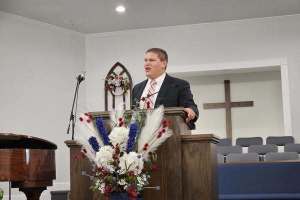Ten Steps to Deal With Inward Drift in Established Churches
On my blog earlier this week, I noted some of the signs of internal drift in established churches. I noted that an established church could be any congregation that has existed for three or more years. The church has developed certain patterns or traditions while simultaneously forgetting its original purpose and passion.
By almost any metric, the majority of North American congregations are established churches. They often include discouraged leaders and frustrated members. Conflict in these churches is often normative.
So how does a church move from an inward drift to an outward focus? Though I provide ten succinct steps, I do not want to leave the reader with a false impression. I am not suggesting that these steps are necessarily sequential, nor am I suggesting that they are a quick-fix for any and every congregation.
1. Find a small group of trusted members who will commit to pray for the church every day. Ask them to pray specifically for the church to move from an inward focus to an outward focus. More praying members can be added to the number at any time. The key is simply to get some people praying daily for the church.
2. Commit to love the church members unconditionally. They may not always be loveable. But love is a conscious choice. Leaders can make that decision regardless of how the members respond.
3. The pastor must be willing to stay with the church through and beyond the changes that will take place. The pastor cannot make unequivocal promises about his tenure. Still, he should have a commitment not only to lead the church through the changes toward an outward focus, but to remain with the church to deal with the impact of the changes. Too many leaders make changes and then leave the congregation to deal with the unintended consequences of the changes.
4. Begin leading members to do hands-on, outwardly focused ministries. It may be something as simple as delivering a welcome basket to new residents. It may only involve a few members initially. The idea is to get members focused on the needs of others rather than their own preferences.
5. Begin casting an outwardly focused vision. After a number of members are involved in ministering to others, they will become receptive and even eager to embrace a vision to reach and minister beyond themselves. Begin to paint a word picture of what a true Great Commission church could look like.
6. Avoid attacking "sacred cows" if possible. There are traditions and other areas of the church that many members hold dearly. It might not make sense to the leaders why they hold onto a seemingly silly item, but the reality is that it has deep emotional attachments for some. Attacking those sacred cows usually creates unnecessary conflict and takes the focus off the outward focus.
7. Celebrate small victories. In the early stages of turnaround, celebrate almost any victory toward an outward focus, regardless of its overall impact on the congregation. That will send a message of what is really a priority in the church.
8. Keep reasonable metrics. Many churches have moved away from focusing on metrics such as attendance, conversions, and people involved in ministry for fear that the statistics will become ends in themselves. But a reasonable focus on some of those metrics will be a regular reminder of the progress the church is making toward becoming a Great Commission church.
9. Learn to deal with criticism in a healthy manner. Any leader moving an organization toward change will be the recipient of criticisms. Some criticism is worth heeding. Some can be discarded or ignored. But the leader must learn not to respond in anger or to seek retaliation. Most critics are hurt or nervous about the changes that are being made. Many of them just need a listening ear.
10. Raise the membership bar. Require all new members to go through a new members' class. Raise the bar of expectation in that class. Let them know that their membership is not in a social club, but a church that is committed to reach its community and the world. These new members must understand that their membership is a commitment to be a part of that mission.
Leading an established church toward an outward focus is like eating an elephant. You can eat only one bite at a time. Progress may seem painfully slow.
But the process is worth all the toil, pain, and prayers. In many cases, the old staid church transforms into a dynamic Great Commission force. We have tens of thousands of established churches in America, many of them with members who have little hope for the future of their congregations. We need leaders and members who will no longer accept the status quo. The challenge is indeed great; but the reward of seeing a church become transformational is incalculable.





























